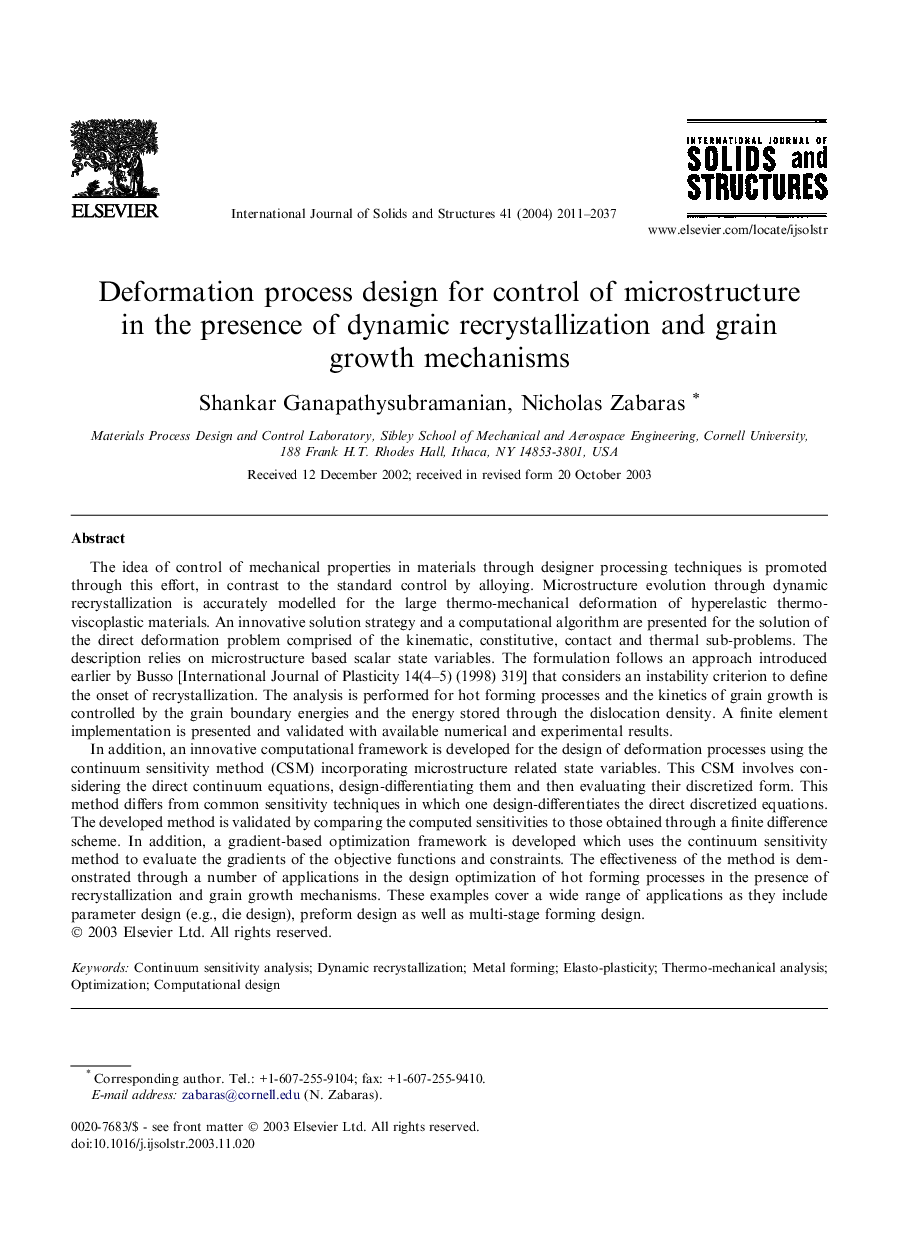| Article ID | Journal | Published Year | Pages | File Type |
|---|---|---|---|---|
| 281903 | International Journal of Solids and Structures | 2011 | 27 Pages |
The idea of control of mechanical properties in materials through designer processing techniques is promoted through this effort, in contrast to the standard control by alloying. Microstructure evolution through dynamic recrystallization is accurately modelled for the large thermo-mechanical deformation of hyperelastic thermo-viscoplastic materials. An innovative solution strategy and a computational algorithm are presented for the solution of the direct deformation problem comprised of the kinematic, constitutive, contact and thermal sub-problems. The description relies on microstructure based scalar state variables. The formulation follows an approach introduced earlier by Busso [International Journal of Plasticity 14(4–5) (1998) 319] that considers an instability criterion to define the onset of recrystallization. The analysis is performed for hot forming processes and the kinetics of grain growth is controlled by the grain boundary energies and the energy stored through the dislocation density. A finite element implementation is presented and validated with available numerical and experimental results.In addition, an innovative computational framework is developed for the design of deformation processes using the continuum sensitivity method (CSM) incorporating microstructure related state variables. This CSM involves considering the direct continuum equations, design-differentiating them and then evaluating their discretized form. This method differs from common sensitivity techniques in which one design-differentiates the direct discretized equations. The developed method is validated by comparing the computed sensitivities to those obtained through a finite difference scheme. In addition, a gradient-based optimization framework is developed which uses the continuum sensitivity method to evaluate the gradients of the objective functions and constraints. The effectiveness of the method is demonstrated through a number of applications in the design optimization of hot forming processes in the presence of recrystallization and grain growth mechanisms. These examples cover a wide range of applications as they include parameter design (e.g., die design), preform design as well as multi-stage forming design.
